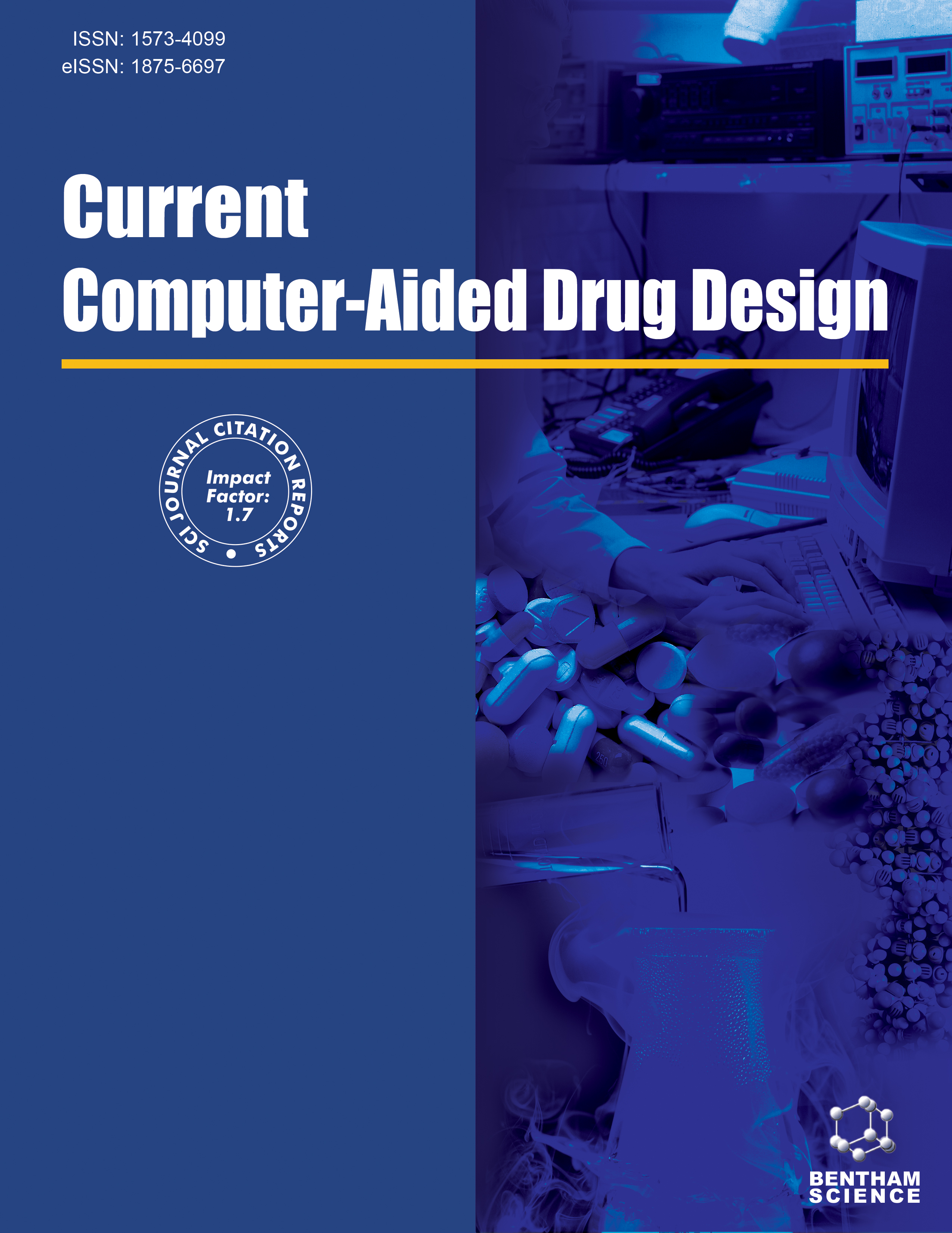- Home
- A-Z Publications
- Current Computer - Aided Drug Design
- Previous Issues
- Volume 1, Issue 2, 2005
Current Computer - Aided Drug Design - Volume 1, Issue 2, 2005
Volume 1, Issue 2, 2005
-
-
Novel Computational Approaches in QSAR and Molecular Design Based on GA, Multi-Way PLS and NN
More LessAuthors: Kiyoshi Hasegawa, Masamoto Arakawa and Kimito FunatsuQSAR and subsequent molecular design are very important steps in drug discovery. Through QSAR, one derives a model that relates a set of molecular descriptors to a biological activity. The resulting model can be used to predict the activity values of new compounds in molecular design. QSAR models range from simple, parametric equations to complex, non-linear models. These models have each specific advantage and Read More
-
-
-
Post-Genomic Design of Bioactive Molecules
More LessThis article is presenting the most recent trends in the ways that the bioactive molecules of the future will be designed. They rely on important recent discoveries for our understanding of the global organization of the cell, giving evidence that biological networks form small-world and scale-free structures. These networks are composed of well-defined modules, with nodes connected by relatively short paths that allow for fas Read More
-
-
-
Variable Subset Selection in the Presence of Flagged Observations and Multicollinear Descriptors in QSAR
More LessAuthors: Peter P. Mager and Luis SanchezA major problem in traditional quantitative structure-activity relationships (QSARs) analysis is to select suitable chemical descriptors from a large pool of variables. Decisions against or in favor of a particular descriptor depends entirely on the result of statistically based hypothesis testing. Uncertain results may be produced in presence of multicollinear descriptors and flagged observations (high-leverage points, outliers, infl Read More
-
-
-
Predicting ADMET Properties by Projecting onto Chemical Space?Benefits and Pitfalls
More LessBy Hongmao SunThe mechanisms behind ADME (absorption, distribution, metabolism, and excretion) related properties and toxicity endpoints are usually complex, and many are not fully understood. As a result, most ADMET predictive models are not based on theoretical principles, but are derived from experimental data. ADMET properties are best analyzed by projecting them onto the compounds of the training set. There are multiple Read More
-
-
-
Assessing QSAR Limitations - A Regulatory Perspective
More LessAuthors: Weida Tong, Huixiao Hong, Qian Xie, Leming Shi, Hong Fang and Roger PerkinsWider acceptance of QSARs would result in a constellation of benefits and savings to both private and public sectors. For this to occur, particularly in regulatory applications, a model's limitations need to be identified. We define a model's limitations as encompassing assessment of overall prediction accuracy, applicability domain and chance correlation. A general guideline is presented in this review for assessing a model's Read More
-
-
-
Computer Design of Vaccines: Approaches, Software Tools and Informational Resources
More LessDevelopment of computer methods in molecular biology and fast growth of microbial genomics data enabled new approach based on selecting in silico antigenic components to design vaccine constructs. It is expected that application of this technology will eliminate side effects of new vaccines and reduce the time consumption and financial expenses. The bioinformatics methods of sequence analysis are used to reveal the most Read More
-
Volumes & issues
-
Volume 21 (2025)
-
Volume 20 (2024)
-
Volume 19 (2023)
-
Volume 18 (2022)
-
Volume 17 (2021)
-
Volume 16 (2020)
-
Volume 15 (2019)
-
Volume 14 (2018)
-
Volume 13 (2017)
-
Volume 12 (2016)
-
Volume 11 (2015)
-
Volume 10 (2014)
-
Volume 9 (2013)
-
Volume 8 (2012)
-
Volume 7 (2011)
-
Volume 6 (2010)
-
Volume 5 (2009)
-
Volume 4 (2008)
-
Volume 3 (2007)
-
Volume 2 (2006)
-
Volume 1 (2005)
Most Read This Month
Article
content/journals/cad
Journal
10
5
false
en


